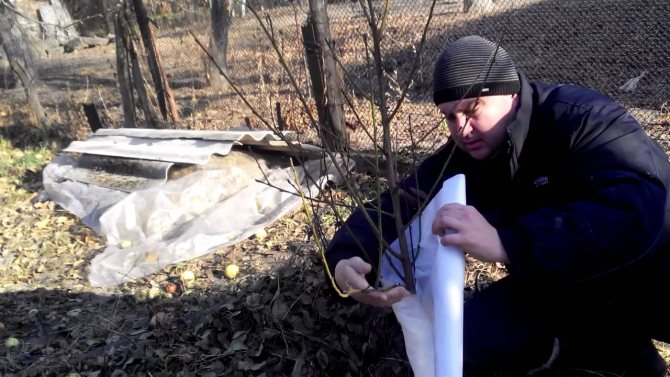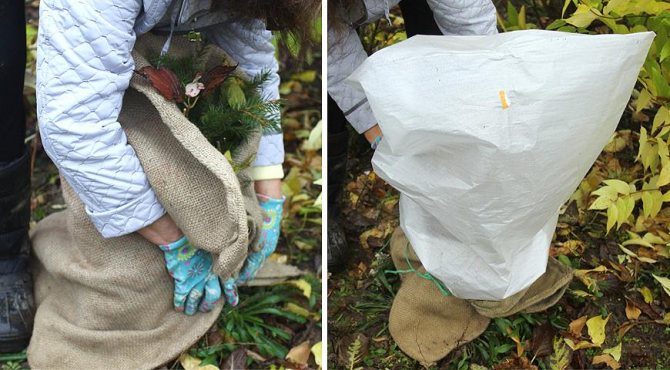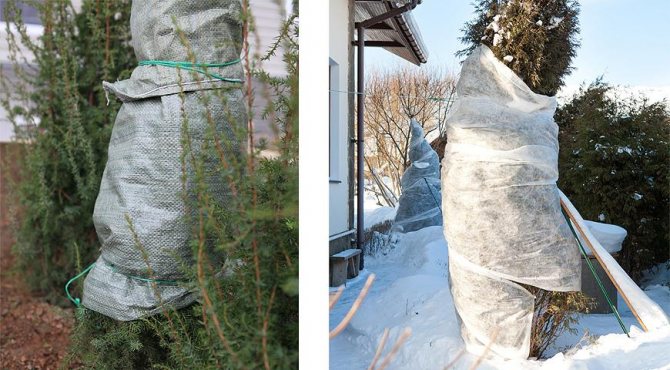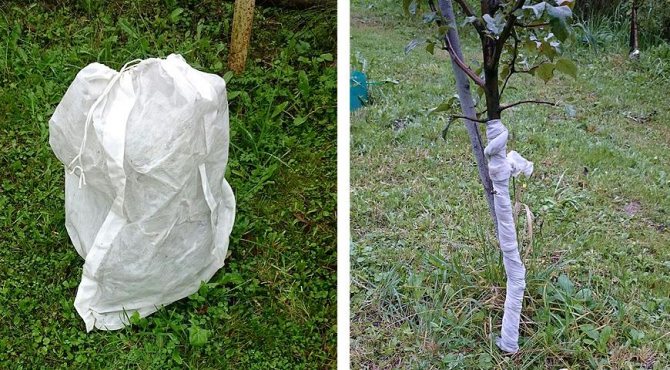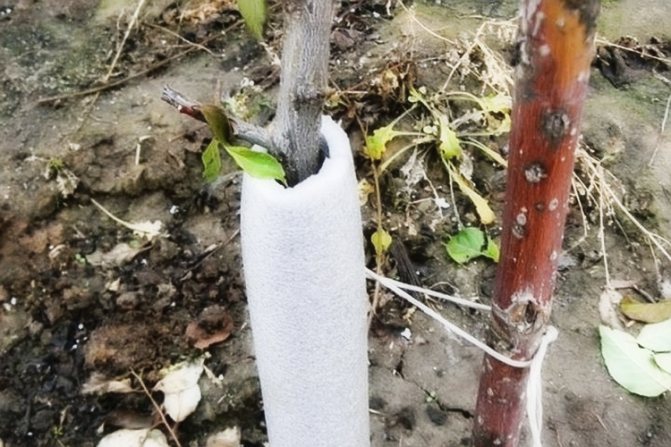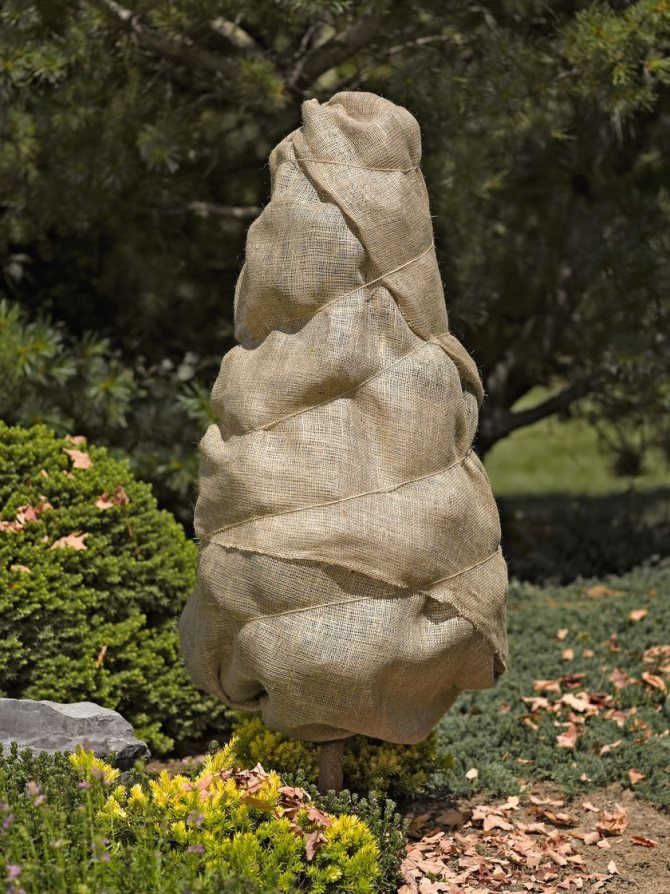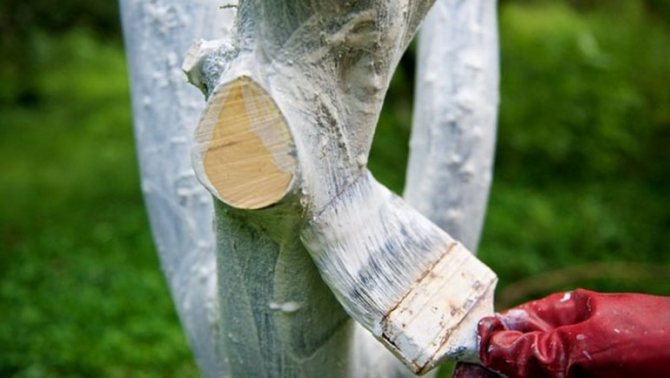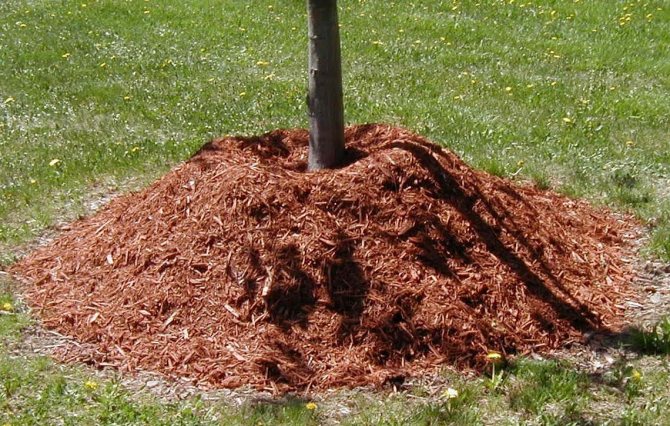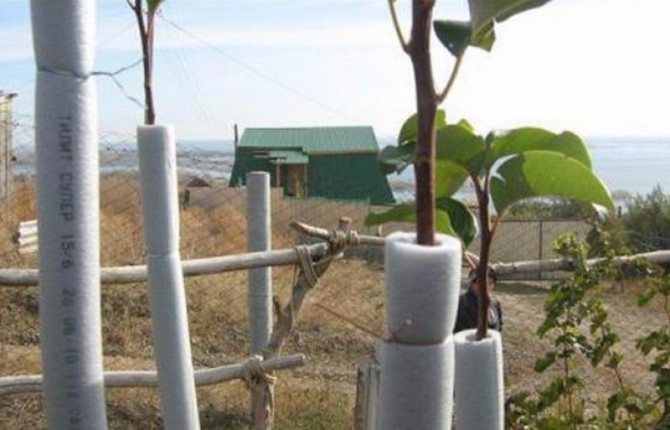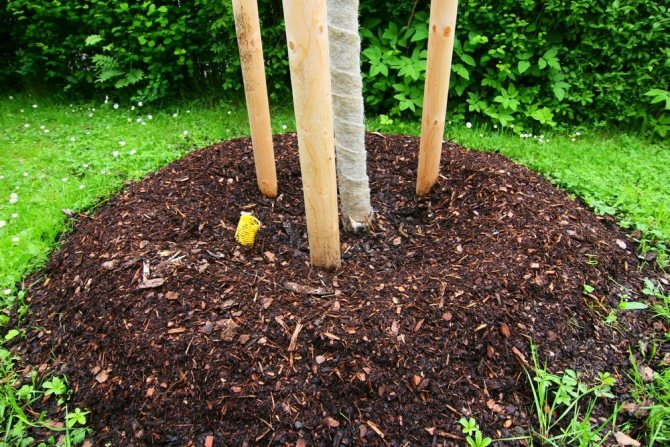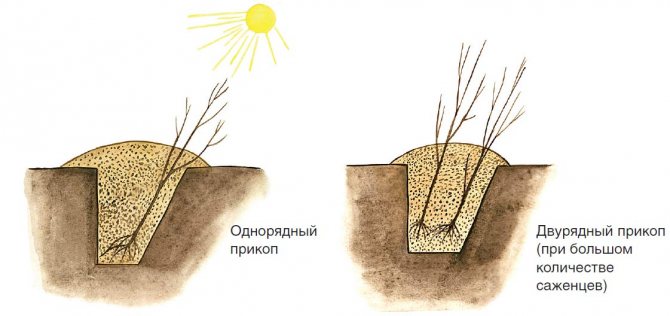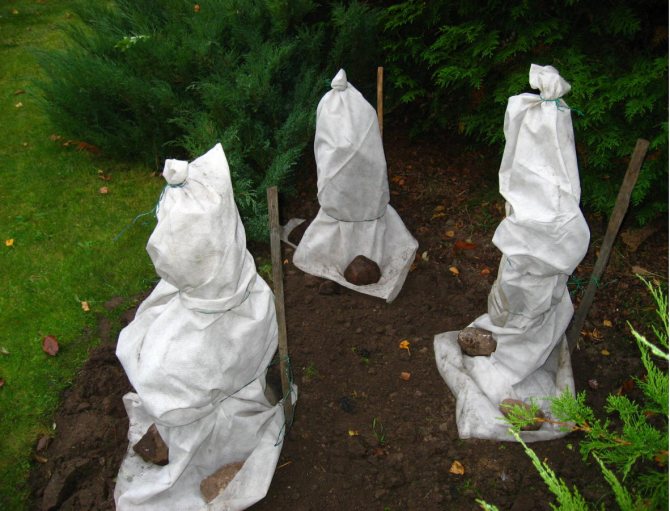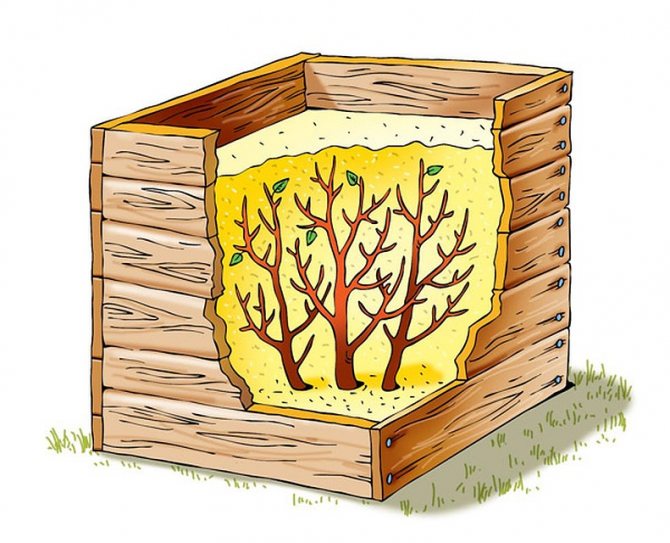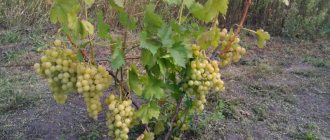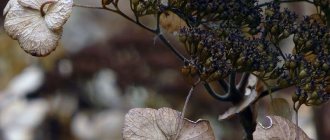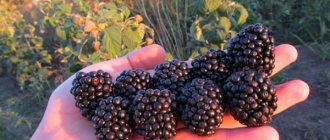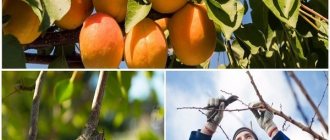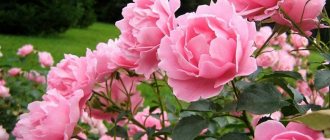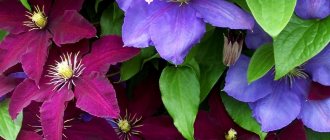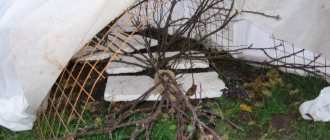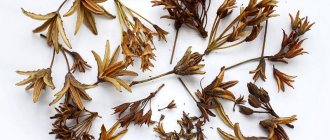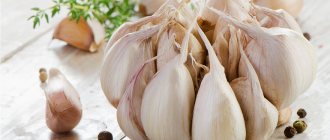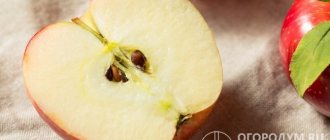Reasons for sheltering trees
In winter, the metabolism of crops slows down, visible growth stops, and they come to a state of rest. At this time, new cells and tissues are formed in plants, the rudiments of leaves are laid, so they become vulnerable.
The main reasons for hiding are:
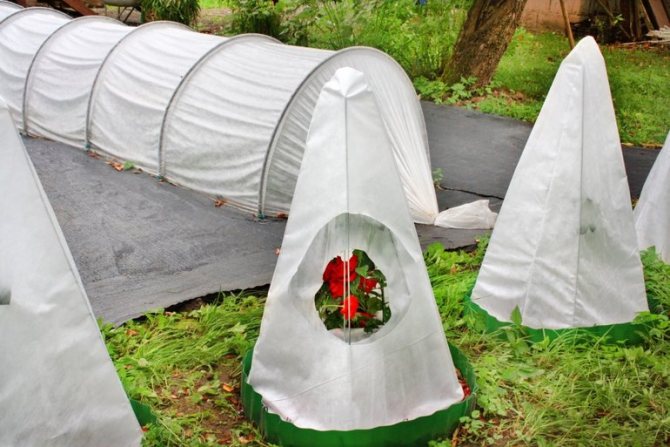
- In some regions, frost "comes" earlier than snow falls. Lack of snow cover leads to freezing of shoots and roots of plants.
- As a result of sudden temperature changes, frost cracks appear on tree trunks, which makes them vulnerable to pests and diseases.
- Burns appear on tree trunks from bright, sunny days.
- Due to the lack of food for rodents and hares in winter, they gladly eat tree bark and shoots.
Advice! Covering material for trees for the winter will help to avoid this. It is impossible to say unequivocally which insulation is better to use. It depends on the region of growth and the type of culture, as well as on the availability of funds from the gardener.
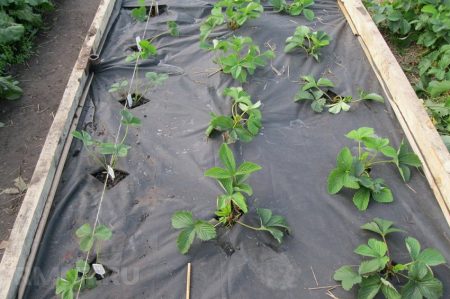

You may be interested in:
How to choose a covering material for the beds? Modern industrial manufacturers are trying to make life easier for agricultural producers by releasing ... Read more ...
Features of other regions
In the Urals, it is impossible to predict what winter will be like. Frosts in this region often reach -40 ° C. Apple trees should be covered in mid-September. Here, a multi-layer insulation cake is formed, and straw, manure or peat is poured onto the root zone to protect the plant.
In Siberia, insulation should be carried out in early September. Insulation of the trunk and branches is carried out up to a level of 1.5 m. Peat or straw should also be thrown over the root area. After the snow falls, you need to warm it up as much as possible under the apple tree. This will reduce the risk of freezing.
Warming of plants
Many crops can winter without insulation. But for the successful cultivation of certain species, special conditions are required. The following plants are subject to shelter:
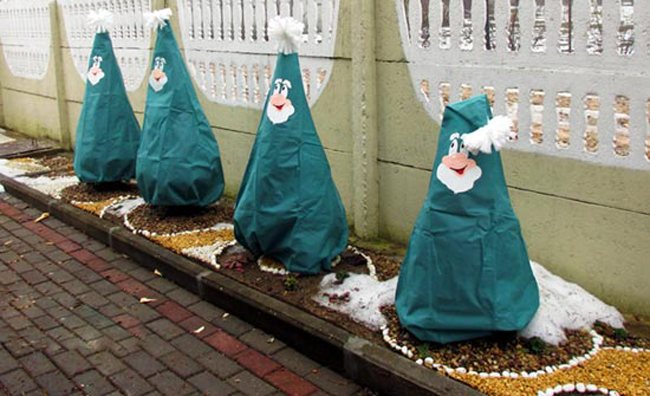

You may be interested in:
Is it necessary and how to cover the thuja for the winter A striking representative of the cypress family is the beauty - thuja. It is considered unpretentious in care, ... Read more ...
- bulbous flowers;
- all roses;
- decorative shrubs;
- alpine plants;
- conifers;
- Strawberry Raspberry;
- rhododendrons;
- perennial flowers, clematis;
- winter garlic.
Important!
It is not necessary to carry out the shelter before the cold weather sets in. Those plants that need insulation in the north, in the southern regions, feel great without it.
Natural covering material
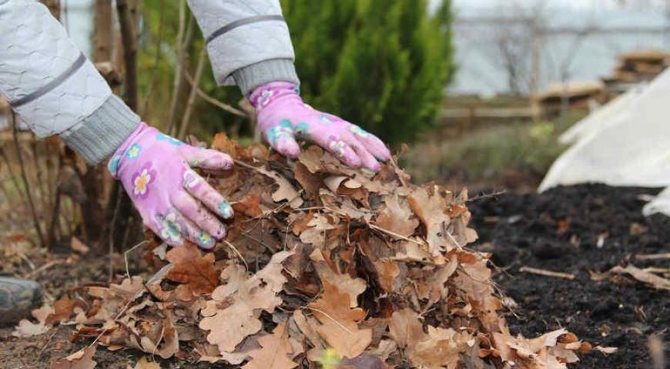

Such insulation belongs to the traditional methods of shelter. It does not require money and can be found in almost any area. Natural raw materials are environmentally friendly. It does not need to be washed or cleaned at the end of the season.
Leaves are among the most affordable insulation materials that protect crops from the cold. It is worth harvesting them during the period of prolonged sunny and dry weather. Mandatory conditions for the use of leaves:
- The material is used only from healthy trees.
- The foliage should be free of bloom and stains.
- The absence of pests in crops is imperative.
Preference should be given to the leaves of chestnut, birch or maple.Unlike fruit trees, they are more resistant to temperature changes and decompose more slowly. To prevent the leaves from sticking together during rains, which makes it difficult for air to flow to the roots, they are additionally covered with other material.
In areas where conifers grow, spruce branches are widely used. Fir, pine and spruce are suitable for this. The needles do not get wet, they are breathable and keep their shape. Trees tied with spruce branches receive not only protection from the cold, but also from rodents, which are scared away by thorny needles.
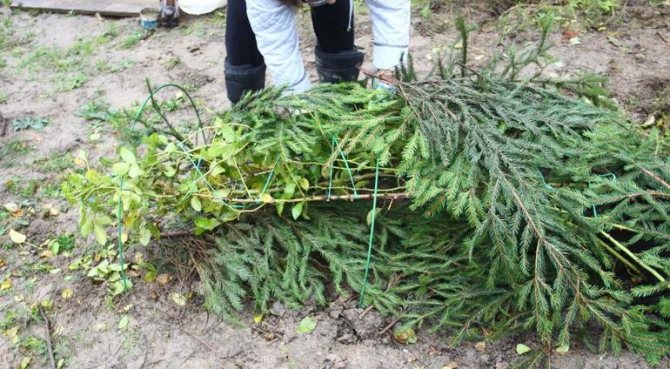

Helpful!
The branches of coniferous trees promote snow accumulation and protect plants from rain and cold winds. And the warm air layer created by them passes oxygen well to the roots. Lapnik does not rot, fungi and harmful organisms do not multiply in it, provided that it was collected from healthy coniferous trees.
Snow is the most convenient, but not reliable covering material in all regions. It can fall out after the frost has already come, melt in the middle of winter, and then turn into a crust of ice. Strong winds blow off snow in open areas. It is worth monitoring the level of snow on the territory and, if necessary, taking measures to stop it. You can make it with stalks of corn, raspberries or sunflowers, cut branches from trees, corrugated board or plastic mesh.
Pest control
The crucial moment in preparing an apple tree for the winter period is freeing trees from peststhat can survive the winter and cause severe damage to fruit trees if the necessary measures are not taken:
- Many inexperienced gardeners deliberately do not remove fallen leaves and small branches around the tree, as they think that in this way they save the root system of trees from freezing. However, pests and larvae of various kinds of insects appear in the fallen leaves, which can harm young shoots and apples. Hence, foliage around apple trees is important to collect and destroy... Similar work is carried out with rotten fruits;
- Carry out treatment with the composition copper sulfate or alternative special drugs for lichen;
- For the destruction of bark beetles attract birds... The easiest method is to hang the feeders and feed the birds;
- To protect trees from sunburn, frost damage and insects, it is desirable whiten the bottom trees.
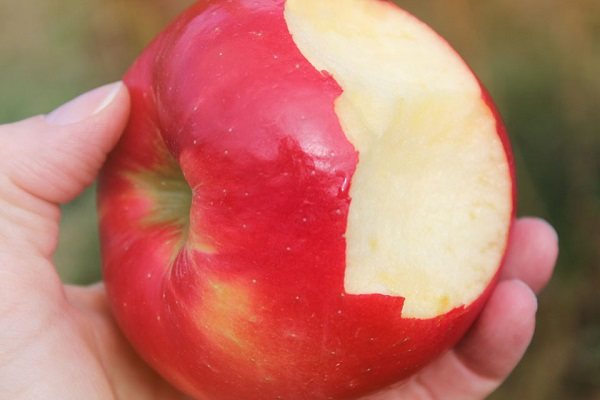

Apple pest control.
IMPORTANT! Carrying out such events will protect trees from diseases and preserve fruits from the invasion of moth caterpillars in the future.
Nonwovens
This is one of the best ways to protect yourself from the cold. The material is capable of passing moisture and air. A constant warm temperature is maintained under it, including due to the ability to transmit sunlight. The soft structure and low weight allow the material to be cast onto plants without a frame. It is enough to fix it with something heavy at the ground. All nonwovens differ in name, manufacturer, web thickness and roll size.
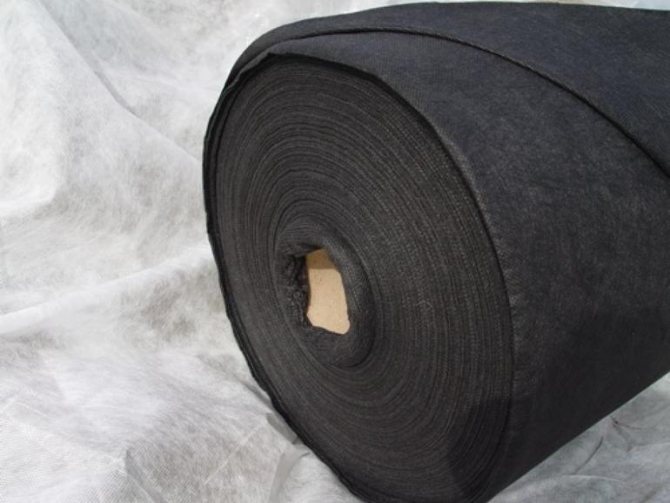

The fibrous or reticular structure of white or black lutrasil protects plants well from frost. They can cover rhododendrons, rose bushes and saplings. The material is inexpensive, soft, dense and of various thicknesses. Lutrasil does not rot and protects well from frost down to -7 ºС. It is unpretentious in care and retains its appearance for 3 seasons. It is easy to fold and unfold. The composition of the material is safe for plants and humans, does not emit toxins.
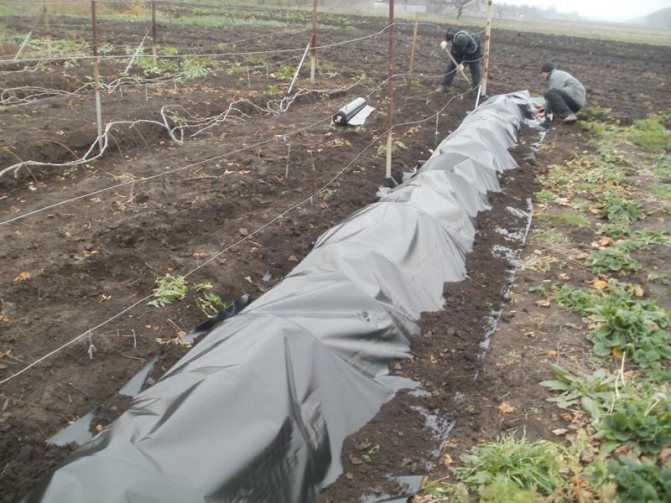

You may be interested in:
How and how to cover grapes for the winter in the middle lane The final list of autumn works in the vineyard is the event - the shelter of grapes for the winter is required not only in ... Read more ...
Geotextiles are made from synthetic polypropylene or polyester fibers.It has a long service life and high quality. The canvas is elastic, durable and does not lend itself to destruction under the influence of negative natural conditions, insects, and rodents. Covering fabric is environmentally friendly, good air and water permeability. Plants do not rot or die under the material. Having covered the protective cones of the canvas with snow, you can additionally insulate crops in severe frosts. Insulation differs in color and manufacturing method.
Spunbond is a material that is obtained from thin lines of polypropylene, thermally interconnected. The canvas is actively used not only on personal plots, but also on an industrial scale. It can withstand a long service life. Agrofibre is practically weightless, conducts air and moisture well. The covering material is durable and environmentally friendly. Special stabilizers that are part of the insulation prevent decomposition and damage by fungi and microorganisms. Timely covering of plants for the winter with spunbond will protect plants from emergency weather factors.
Columnar apple trees
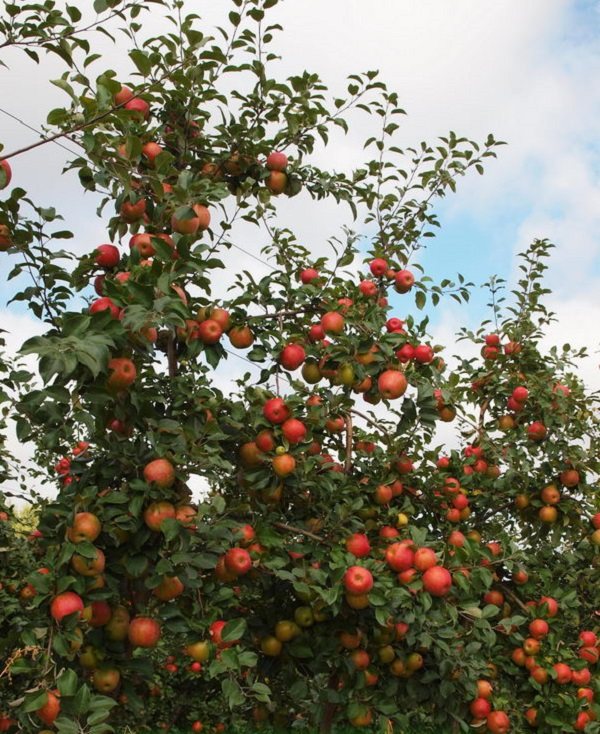

Harvest a columnar apple tree.
These are unique trees no more than 2.5 m in height and up to 0.5 m in width, with a high yield. They do not have long branches around the central shoot. Apple trees of this type must be completely covered:
- Wooden planks are taken;
- A pyramid gathers around the tree;
- It is poured into humus;
- The pyramid is wrapped in a material such as polyethylene or tarpaulin.
Apple trees will easily survive the winter bad weather and in the spring they will start to delight with their flowering, and then with apples.
Polyethylene film
For a long time, it was this material that was the main insulation in winter. But it had a seasonal service life, as it quickly became cloudy, and this prevented the flow of light. The durability of the web was drastically reduced and it became easy to damage it. The modern market offers various types of plastic films.
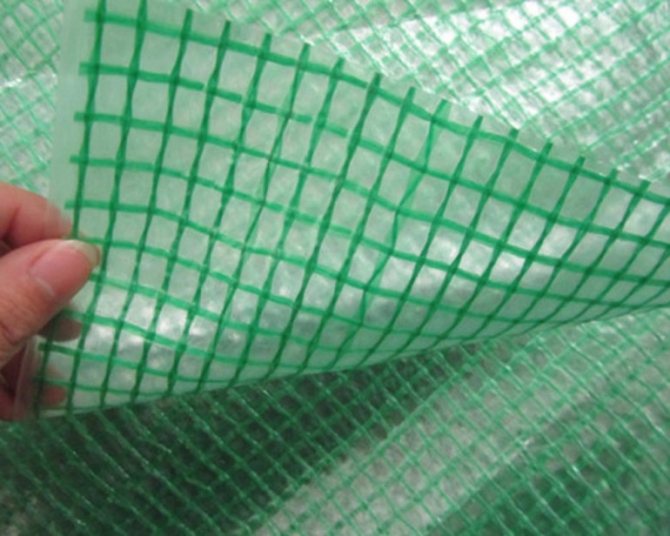

In appearance reinforced film resembles a mesh, on both sides of which a polyethylene film is fused. Mesh yarns of various thicknesses are made from polyethylene, fiberglass and polypropylene. Due to this, the web has high strength and tensile strength. Damage is limited to the size of the cell, so it is easy to recover.
The steam and waterproofing properties of the insulation allow it to withstand such difficult weather conditions as frosts down to -30 ºС, squall wind, precipitation in the form of hail and rainstorms. The reinforced film is suitable for use for more than 5 years in a row. Best of all, light is trapped by a white film.
Air bubble wrap Is a transparent material with small bubbles that are filled with air. Manufacturers produce several models with different bubble sizes. The larger they are, the better the light transmission, but the lower the mechanical properties. The material is harmless to plants and the human body. Bubble wrap has good heat-saving properties, therefore it is resistant to low temperatures. The density of the covering insulation is 83-120 g / m². Due to its low weight, the material does not need a frame. But if there is a need for this, then, due to its plasticity, it is easy to mount it on any structure.
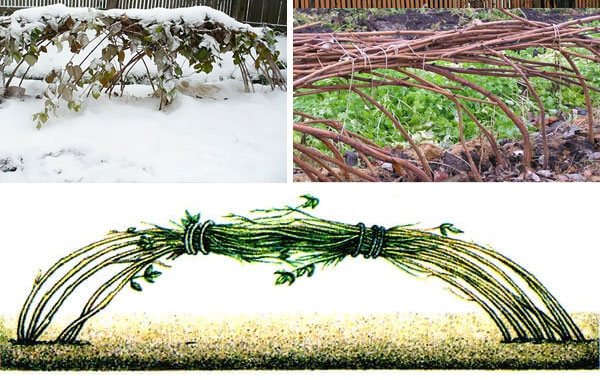

You may be interested in:
How to cover raspberries for the winter: preparing for wintering The productivity of raspberries is greatly influenced by high-quality care of the shrub during the entire growing season ... Read more ...
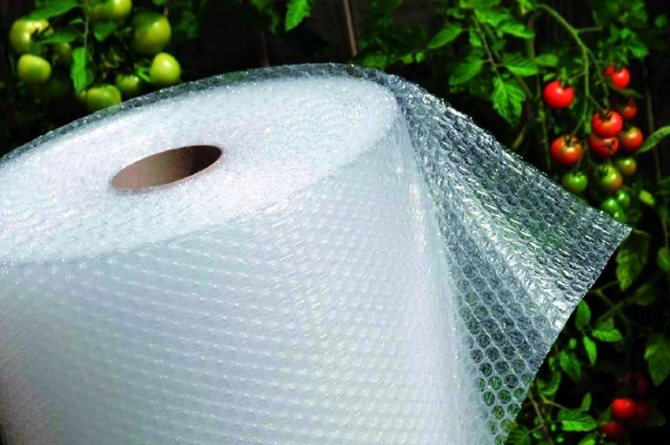

During manufacture, a special stabilizer is added to the composition of the light-stabilized insulation, which protects the film from ultraviolet exposure. This contributes to an increase in the period of its use. The canvas is able to protect crops from frost down to -8 ºС. Such insulation serves up to 7 years, depending on the model.To prevent the appearance of condensation, some manufacturers add hydrophilic additives to the material, and dyes are added to change the spectrum of sunlight. If chemicals containing sulfur or bromine come into contact with the film, it can be destroyed.
Digging and feeding
After harvesting, trees need feed with mineral fertilizers, since the accumulation of nutrients in apple trees begins. This should be done within 2-3 weeks after picking apples, so as not to delay the end of the growing season.
During the digging process, potash and phosphate fertilizers.
The branches finally slow down their development and ripen, increasing the apple tree's frost resistance. Brown leaves on the trees indicate the readiness of the apple tree for wintering.
Winter is preferable to withstand trees that have received a complex of fertilizers during spring-autumn:
- Spring - complex mineral fertilizer;
- July August - nitrogen, which improves the growth of shoots and increases the frost resistance of the tree bark;
- Second half of summer - potassium and phosphorus also increase frost resistance.
Other materials at hand
In addition to natural, non-woven materials and polyethylene film, an available material can be used for insulation. Burlap is not the best material for sheltering plants for the winter. She is more likely to protect crops from the sun than frost. The trunks of young trees are tied with burlap, and heat-loving crops are covered. The bags are sewn from natural and synthetic fabrics.
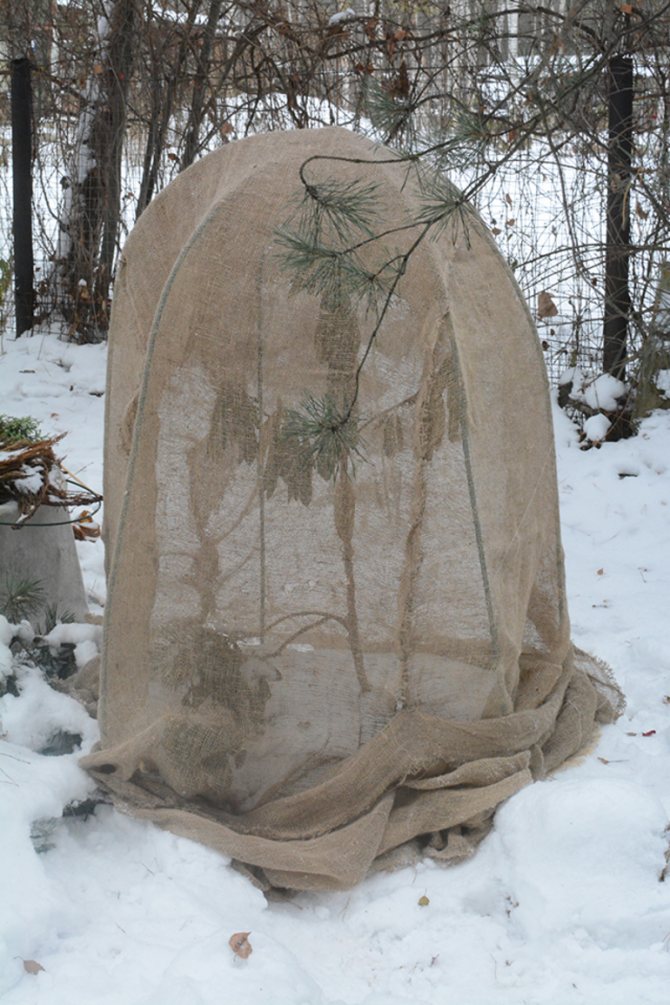

Burlap absorbs moisture and under the influence of low temperatures, the cold wind does not dry out, but turns into an ice crust encircling the plant. Mold and rot develops under wet fabric. As a result of a violation of air exchange, the culture may die. If old bags are used for shelter that have not been properly disinfected, they will become a source of various infections.
Advice!
Building materials such as the remains of roofing material, wooden pallets, boards, pieces of slate, glass - all this can be useful for sheltering plants. Some materials are used in the construction of frames, others are directly involved in insulation, and still others perform the functions of a snow retainer.
Construction objects may contain harmful chemical impurities, for this reason, their use must be treated with caution. Some do not allow moisture and air to pass through, which leads to damping of the plant.
Protecting trees for the winter from frost and rodents
If the site is located near the forest, the problem of rodents cannot be avoided. Hares and mice can become a real disaster for young trees, because they are most often attacked by rodents.
To prevent mice, rabbits and hares from reaching the tender bark of young apple trees, you need to do more than just wrap the trees for insulation. Additional protection will be required.
Necessary materials
For successful rodent control, tree trunks must be properly prepared.
You will need the following materials:
- Insulating material - spruce or juniper spruce branches;
- Strapping material - burlap, non-woven fabric, polyethylene film;
- Plastic or metal mesh for the fence;
- Bordeaux liquid - for the subsequent cultivation of the land after the start of frost.
It will not be superfluous to decompose the poison in mouse and rat holes, since these rodents greatly harm not only plants, but also humans. Therefore, it is better to get rid of them forever.
Be sure to cultivate the land around the trees to prevent rodents from even getting close to the tender bark. Choose mixtures and solutions that benefit the seedlings - the same Bordeaux mixture is great for treating plants.
Shelter technology
Young apple trees prepared for wintering should be carefully wrapped with spruce or juniper branches, while the thorns should be directed downward. You can fasten the spruce branches with ropes.Spruce branches should cover the trunk from the ground and at least 1 m up.
Craftsmen are advised to additionally add something strong-smelling and unpleasant to rodents to the branches. This can be peppermint or peppermint oil, dog hair, elderberry, creolin, or mothballs - whichever is in your household supplies.
Next, you need to wrap the trunk with plastic wrap or other selected material - so rodents will definitely not be able to get to the delicate bark.
However, there is a risk of root gnawing and must be dealt with as well. For this, a special fence made of plastic or wire mesh is installed around the tree at a distance of 20 - 30 cm. It must be dug into the ground to a depth of at least 30 cm.
Other methods of rodent control
If the main damage is caused by hares and rabbits, they can be dealt with in the following way: hang rustling black polyethylene on the branches, or pieces of thick cardboard of some bright color. These animals are very shy, and, having noticed movement near the trees, they will hasten to leave.
As another method of controlling rodents, you can use special repellents. They are easy to make with your own hands - for example, from a plastic bottle and mothballs - and can also be purchased at specialized stores. These repellents give off a strong, rodent-unpleasant odor and must be renewed periodically to maintain their effectiveness.
Choose those products that are not dangerous to humans and pets. It is better to use several methods than one, but the most radical one.
Perhaps all these protective measures will seem superfluous to someone. However, here are a few facts: according to statistics, 60 - 80% of seedlings die from frost in their first winter, and about 90% of properly untreated trees suffer from rodents.

